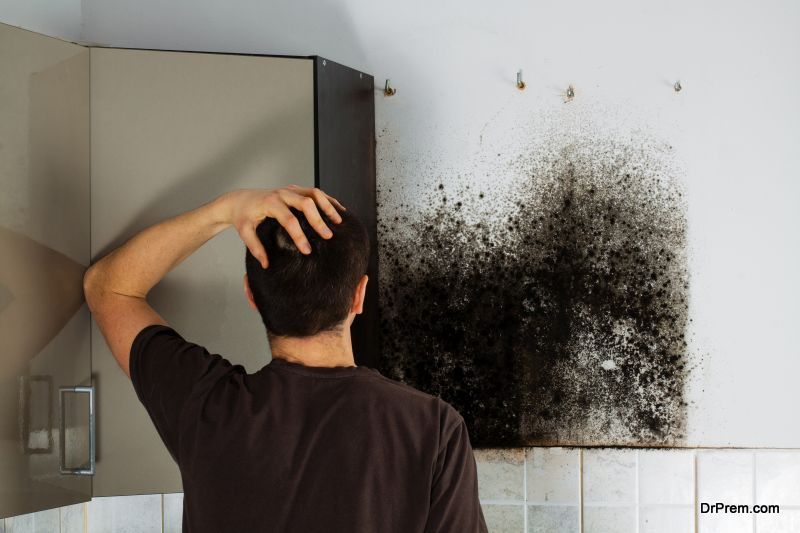Mold is one of the hidden killers in a home that few people think about. They worry about termites and water damage, but mold is a threat that’s hard to get rid of and bad for your health. The average homeowner pays between $1,000 and $3,000 to have mold removed, but some people end up paying more than $5,000 in extreme cases.
Mold can trigger asthma and allergy symptoms that make it hard to breathe but can also cause fatigue and headaches in healthy people who suffer from black mold poisoning. Can you really afford to have something so dangerous and expensive in your home? Follow these three steps to create a negative environment for mold in your home to keep everyone safe.
Remove Leaky Faucets that Pool Water
 Mold is just one of many reasons to fix leaky faucets in your home. You could be damaging your wood floors, wearing away at your infrastructure, and attracting all kinds of insects like cockroaches to your home. Furthermore, damp areas underneath sinks are perfect breeding grounds for mold. All it takes is a few screws (and maybe a new pipe) to fix your leaky faucet, which can save you thousands when mold starts to spread.
Mold is just one of many reasons to fix leaky faucets in your home. You could be damaging your wood floors, wearing away at your infrastructure, and attracting all kinds of insects like cockroaches to your home. Furthermore, damp areas underneath sinks are perfect breeding grounds for mold. All it takes is a few screws (and maybe a new pipe) to fix your leaky faucet, which can save you thousands when mold starts to spread.
Install Better Circulation in Your Bathroom
If you’re a fan of hot showers, then you’re probably leaving your bathroom soaking wet once you’re done. Your towels, floor, mirror, and walls are all damp with steam and will stay moist for a while until the water evaporates. If you don’t have the right circulation — especially if you close the door after — you could end up creating a damp space for mold to grow.
By all means, enjoy your hot showers, but make sure the bathroom dries quickly after. Install a fan to clear the air and open the door to let steam out. You may even want to wipe down the floor and mirrors to remove excess moisture immediately.
Monitor Indoor Humidity Levels
 Your home’s humidity can affect the rate of mold growth in certain areas around the house. Unfortunately, most homeowners only think about setting their temperatures; they don’t think about setting humidity levels with it.
Your home’s humidity can affect the rate of mold growth in certain areas around the house. Unfortunately, most homeowners only think about setting their temperatures; they don’t think about setting humidity levels with it.
The first step is to get a humidity monitor if you don’t already have one on your thermostat. Most homes are best with humidity levels that hover around 35 percent. The next step is to get a dehumidifier if you’re unable to keep your humidity levels at reasonable amounts. This will manually take the moisture out of the air and create a hostile environment for mold.
In some cases, you might want to find mold-killer and prevention spray at your local homecare store to fight against mold and prevent it from growing back. Making this part of your regular routine is good for keeping mold under control, but you should evaluate the source to determine why it keeps growing in the first place, and try to stop it. This way your home and your family will be safe from this toxic menace.
Article Submitted By Community Writer




